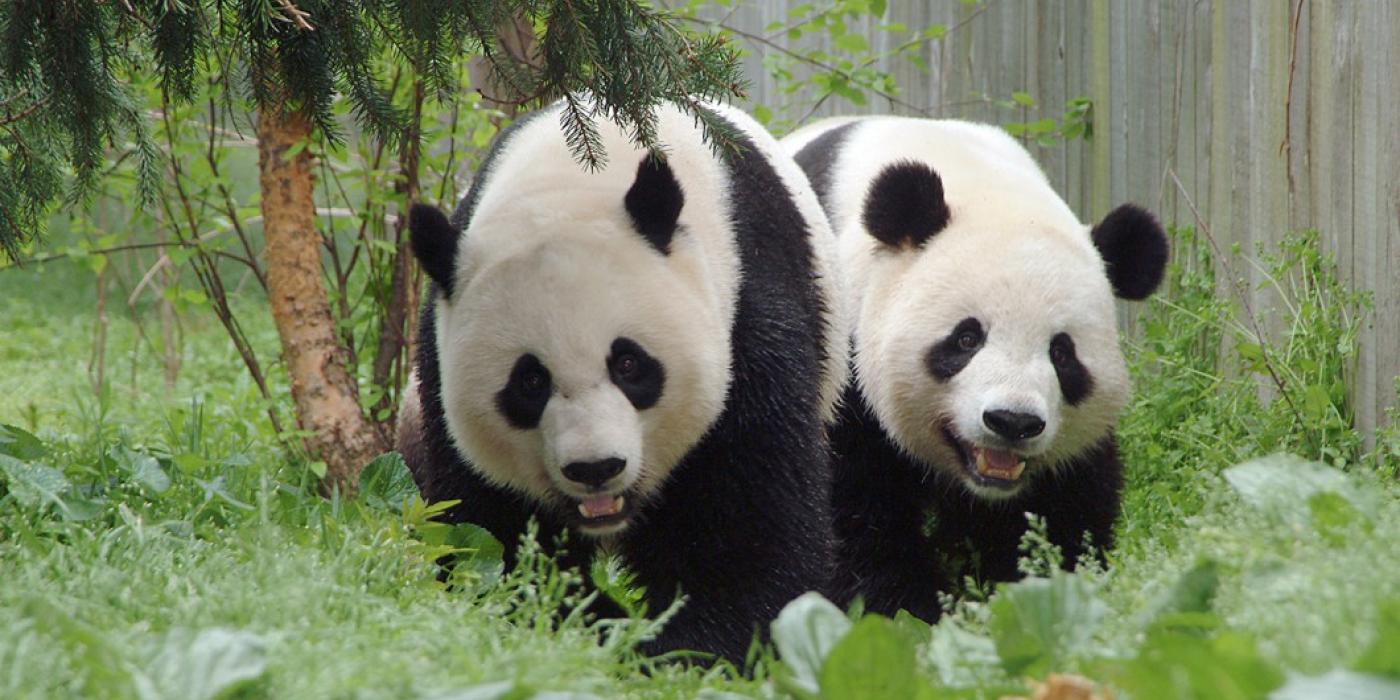

As a leader in wildlife conservation, the Smithsonian's National Zoo and Conservation Biology Institute has made significant strides towards securing a future for the world's rarest species of bear: the giant panda.
Ever since the first pair of giant pandas arrived in Washington, D.C. in 1972, Smithsonian scientists have partnered with Chinese colleagues on vital research to protect these unique bears. The Giant Panda Conservation Program relies on a comprehensive approach, encompassing scientific research, habitat preservation, international collaboration and public engagement. Smithsonian scientists work to unravel the mysteries of panda biology and behavior, gaining crucial insights into their nutritional needs, reproductive habits and genetic diversity.
Efforts to save the species are paying off. In 2016, the International Union for Conservation of Nature announced the giant panda was downlisted from “endangered” to “vulnerable” on the global list of species at risk of extinction.
Research conducted by the Smithsonian’s National Zoo and Conservation Biology Institute has contributed to the welfare of giant pandas across the globe. The program’s goals are to protect giant pandas in the wild and to maintain a genetically diverse population in human care.
Giant pandas’ native habitat—the bamboo forests of China—is highly fragmented. Once abundant throughout China, urban development and deforestation has restricted the animals’ range to a handful of mountain ranges in central China. Although the forests are now protected, lack of habitat connectivity makes it difficult for the bears to find food and mates.
Smithsonian ecologists collaborate with scientists from the China Wildlife Conservation Association to expand and connect panda habitats throughout the region. They have identified key forest corridors and created bamboo restoration plots. Scientists are also studying the potential impacts of climate change on giant panda habitat and making recommendations to Chinese officials on mitigation strategies.
With so few bears remaining, any disease that threatens an individual animal is an inherent risk for the entire population.
Scientists at the Smithsonian study diseases that threaten giant pandas in the wild and in human care. To better understand panda health, Smithsonian veterinarians work with Chinese colleagues at the Wildlife Disease Control Center in Sichuan Province. They use cutting-edge science to monitor and diagnose disease and age-related illness in pandas — all of which help inform future biomedical studies on the species. Additionally, researchers evaluate diseases that can be transferred over from other animals, like canine distemper, and work to prevent illnesses in panda populations around the world.
In the past, scientists knew little about the reproductive biology of pandas. Over decades of joint efforts with Chinese partners and other zoos, knowledge about breeding and management of giant pandas in human care has increased exponentially. The Smithsonian’s work to understand reproduction increased the likelihood of pregnancies in giant pandas under human care
Knowledge of panda biology has been applied to improve reproductive success and ensure genetic diversity among the population. Development of artificial insemination techniques has been successfully applied at the Zoo, resulting in the births of giant pandas Tai Shan, Bao Bao, Bei Bei and Xiao Qi Ji. Additionally, advances in noninvasively tracking metabolites of hormones and sex steroids in fecal and urine samples helped Smithsonian scientists better detect estrous periods, determine optimal timing for natural mating or artificial insemination and monitor pregnancies.
Beyond its scientific contributions, collaboration and knowledge sharing have been fundamental aspects of the Smithsonian’s National Zoo and Conservation Biology Institute’s Giant Panda Conservation and Breeding Program. The Smithsonian provides comprehensive workshops and hands-on training courses for university students, conservation professionals and forestry officials. Lessons learned from these collaborations can be used by future generations of animal care professionals, veterinarians and researchers to care for pandas in human care and in the wild.
Through the years, Smithsonian scientists have trained more than 1,500 Chinese wildlife professionals and students, many of whom now lead major giant panda research and habitat programs in China. By collaborating with Chinese colleagues at state forestry agencies, giant panda reserves, non-governmental organizations, universities and breeding centers, Smithsonian scientists have transformed giant panda care and conservation not just in Washington D.C. and China, but around the world.